11 White-Headed Hawks – A Closer Look at Unique Features
Updated: 10 Mar 2024
59
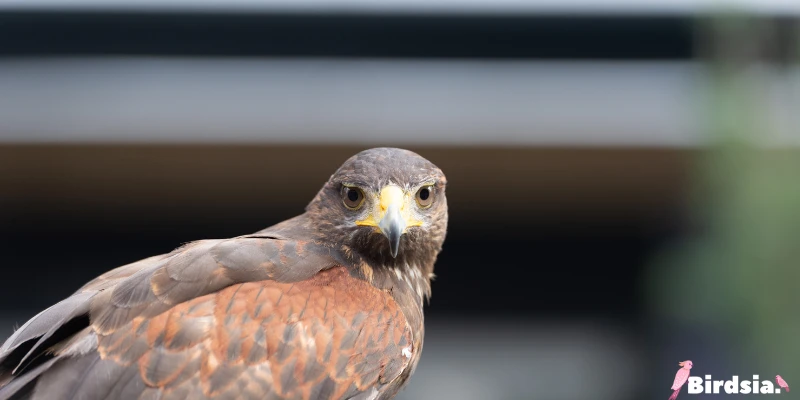
White-headed hawks are special birds that aren’t often seen. Their unique appearance has captivated the imaginations of cultures worldwide, sparking legends, lore, and scientific inquiry since the 1800s. These majestic hunters have striking appearances and effortlessly soar through the skies. Imagine seeing one flying high, its white head shining in the sunlight as it scans the land below.
In this article, we delve into the eleven species of hawks adorned with snowy crowns that can be found across the globe. Join us as we uncover fascinating facts about each of these majestic birds. Keep reading to embark on an enlightening journey of discovery!
Here is a list of the 11 most interesting hawks with white heads:
1. Hawaiian Hawk:
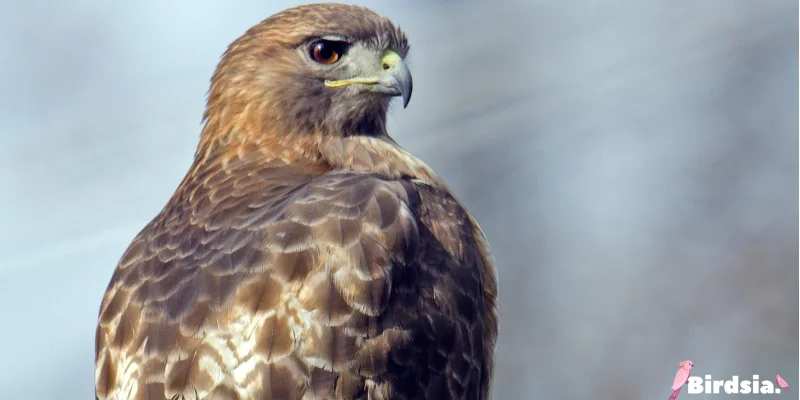
The Hawaiian hawk, also called ‘io, is a native bird in Hawai’i, mainly found in the Big Island and Maui rainforests.
There are two types of Hawaiian hawks: young ones with a light look have creamy-white heads with brown streaks and dark brown backs.
They live in dense forests, the edges of forests, and plantations, where they hunt insects, rodents, and birds. Their sharp talons, with three toes in front and one backward, help them catch prey easily.
You can recognize Hawaiian hawks by their high-pitched “eee-oh” calls, which is how they got their Hawaiian name. They’re listed as Near Threatened because their numbers dropped in the 1950s due to illegal hunting and habitat loss.
But, thanks to efforts like the Endangered Species Act, Hawaiian hawk populations have bounced back from a few hundred to around 3,000 birds.
Scientific Name: Buteo solitarius
Size: 16–18 inches
Wingspan: 34-39.7 inches
Lifespan: Up to 17 years
Native to: The Hawaiian Islands, specifically found in Hawaii, Maui, Kauai, Molokai, and Oahu.
Diet: Their diet consists of rodents, insects, and invertebrates such as crickets, katydids, and earthworms.
Interesting Facts:
- White hawks hunt by perching on power lines or high in the tree canopy, then swoop down onto unsuspecting prey.
- Hawaiian hawks are monogamous and typically mate for life, often returning to the same nesting spot each year.
- If one mate dies, the surviving Hawaiian hawk will find a new partner within 3 months.
- They communicate through vocalizations, especially when locating food, signaling their mate to share the meal.
- The male Hawaiian hawk usually offers food to the female before eating himself, demonstrating their strong bond and cooperative behavior.
2. The White Hawk:
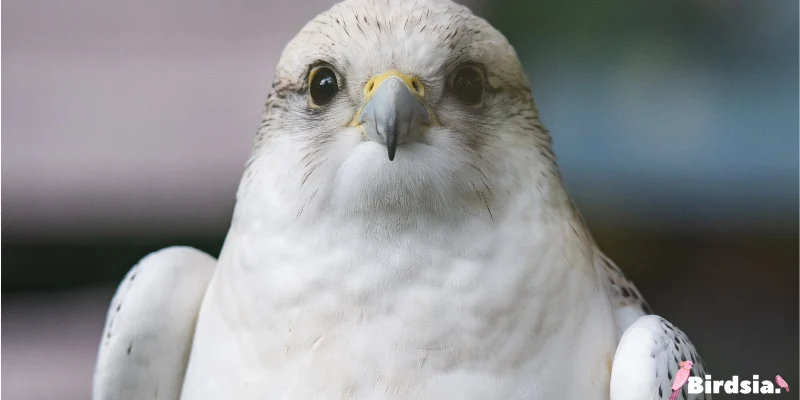
The white hawk is a stunning bird adorned with pure white plumage from head to tail and underparts, though its feathers bear distinctive black streaks. You can also identify them by their distinctive “kerwee” calls.
Inhabiting lowland forests and woodlands, white hawks can be found from southern Mexico through Central America down to Brazil, Bolivia, and Peru.
Measuring between 18 to 20 inches in length, with an impressive wingspan ranging from 38.5 to 43.3 inches, these birds can live up to 20 years.
Scientific Name: Pseudastur albicollis
Lifespan: Up to 20 years
Size: 48-56 centimeters (19-22 inches)
Weight: 580–850 grams (1.3–1.9 pounds)
Origin: South America, Mexico, and Central America
Diet: Their diet primarily consists of lizards, small mammals, snakes, and large insects like locusts.
Interesting Facts:
- Due to their lack of camouflage, white hawks are often more aggressive compared to other hawks.
- They are at higher risk of being hit by cars as they are less likely to be seen due to their conspicuous white plumage.
- During courtship and territorial displays, white hawks utilize their long tail feathers for display.
- Their nests are constructed from grasses, twigs, and other plants, with the female primarily responsible for the building process.
3. Mantled Hawk:
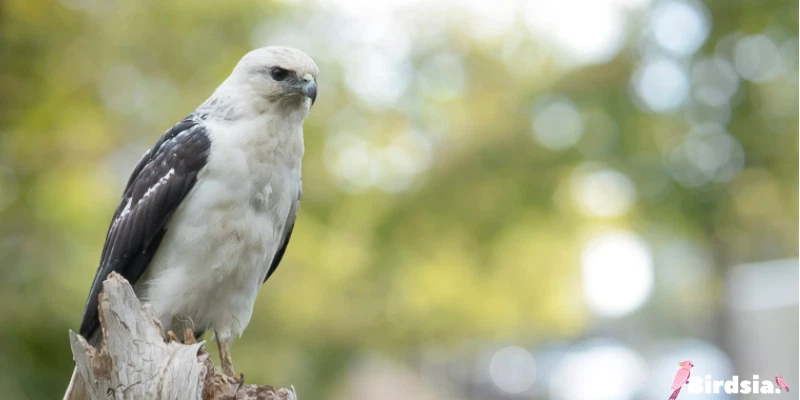
Mantled hawks are medium-sized birds of prey found in South America. Like other hawks with white heads, females are typically larger than males.
They boast white heads, bellies, and tails, along with barred black backs. Notable features include their pale gray beaks with black tips, brown eyes, and orange-yellow toes. Their distinct “weeuw” whistle calls help identify them.
Endemic to Brazil, mantled hawks also inhabit regions of Paraguay, Uruguay, and Argentina. They favor humid forests, secondary growth, and plantations, residing at altitudes ranging from sea level to 4,500 feet.
Scientific Name: Pseudastur polionotus
Lifespan: Up to 20 years
Size: 18.5-20.2 inches
Wingspan: 46.4-50.7 inches
Native to: Central and South America
Diet: The Mantled Hawk prefers small to medium-sized mammals, particularly rodents. However, it also preys on birds, reptiles, amphibians, large insects, and other small animals.
Interesting Facts:
- Mantled hawks hunt by perching on high trees or rocks, where they have a clear view of areas frequented by prey. They also fly low over fields or meadows, scanning for signs of animal activity.
- They typically nest on cliffs or in high trees, laying one egg per clutch.
- Mantled hawks utilize their mantles for defense against predators and larger raptors, such as ferruginous hawks.
- The species’ most distinctive feature is its large eyes, which contribute to excellent vision, along with strong legs that make it an agile predator.
4. The White-Necked Hawk:
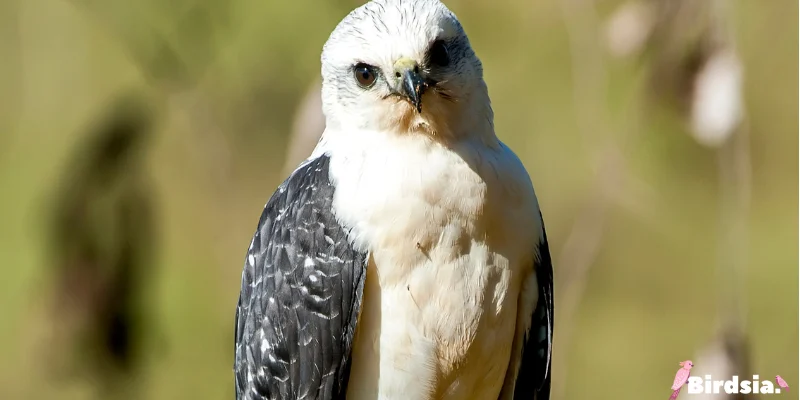
White-necked hawks are renowned for their large size and distinctive white heads. Standing approximately 17 to 19 inches tall with a wingspan of about 35.8 to 39.7 inches, these hawks command attention.
These hawks boast striking features, including pure white heads and underparts, black-gray upperparts, white tails adorned with black bands, and yellow bases on their beaks.
Inhabiting a variety of environments, including forests, savannas, grasslands, scrublands, and wetlands in South America, particularly Brazil, they are adaptable hunters.
Scientific Name: Buteogallus lacernulatus
Lifespan: Up to 20 years
Size: 17–19 inches
Wingspan: 35.8-39.7 inches
Native to: Central and South America
Diet: Their diet consists mainly of small mammals such as rodents, birds, reptiles, insects, and invertebrates.
Interesting Facts:
- The decreasing population of white-necked hawks is due to hunting for food and the belief in the medicinal properties of their feathers and bones.
- In some Brazilian communities, their feathers are utilized as headdresses in cultural ceremonies.
- Despite the female laying 2-3 eggs per clutch, only 1 out of 3 typically survives until hatching due to natural predators such as birds or mammals preying on the eggs.
- White-necked hawks are known to mate for life, often seen in pairs as they establish strong bonds with their partners.
5. Rough-legged Hawk:
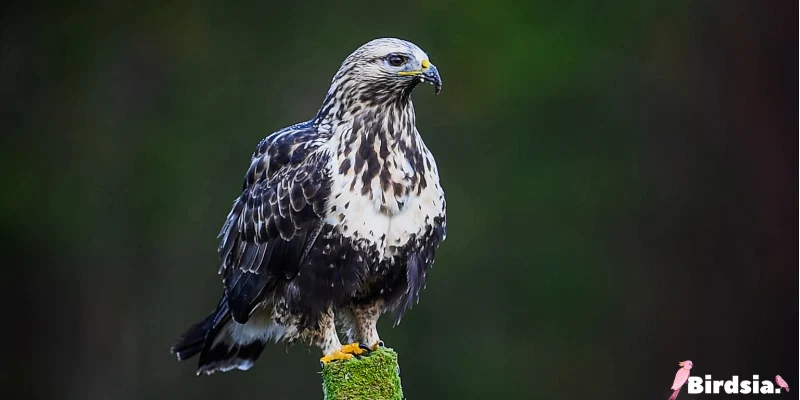
The Rough-legged Hawk, also known as the Rough-legged Buzzard, is a medium-sized hawk commonly found in boreal forests, grasslands, and open fields throughout North America, Europe, and Asia.
Nesting in trees and cliffs, they lay 1–7 bluish-white eggs with brownish spots, exhibiting monogamous behavior as males feed the females while they incubate the eggs.
Notable features include leg feathers extending to their toes, black wrist patches, and white bases on their tails. With various morphs, light ones have pale whitish-streaked heads, dark belly bands, black wing patches, and white tails, while dark morphs sport brown-black plumage with banded tails and white flight feathers.
Scientific Name: Buteo lagopus
Lifespan: 15 years
Size: 18–24 inches
Wingspan: 47–60 inches
Native to: North America
Diet: They primarily feed on rodents but also target other small mammals, birds, amphibians, slugs, and reptiles.
Interesting Facts:
- The female rough-legged hawk constructs a stick nest, typically located in the forks of trees or on power poles.
- Hunting strategies often involve perching on a rock or elevated perch, patiently waiting for unsuspecting prey to pass by before diving down to capture it.
- While many populations remain resident in their natural habitats year-round, some individuals undertake partial migrations, particularly during winter or in response to food scarcity.
- The distinctive whistling noise produced by their wings beating through the air is a characteristic feature of rough-legged hawks.
6. The Osprey Hawk:
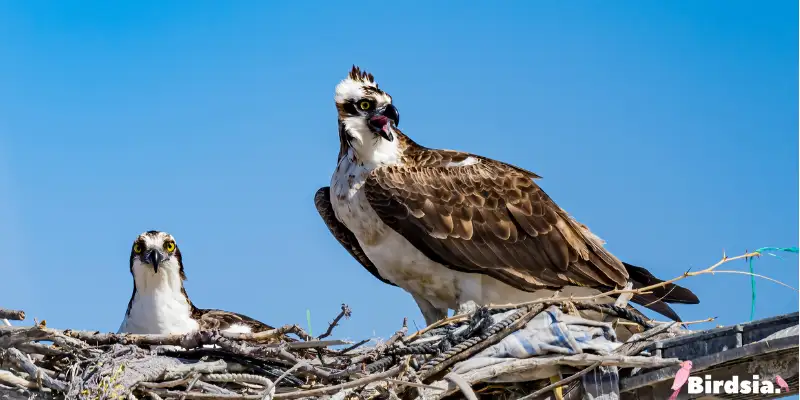
Ospreys, large diurnal birds of prey, are found on every continent except Antarctica. Often mistaken for bald eagles due to their white heads and wide wingspans, they have dark brown upperparts and white underparts, with an M-shaped wing pattern in flight.
In North America, they breed from Alaska to Florida and winter from the southern USA to Argentina, favoring coastal areas, lakes, and rivers.
During their 15-20-year lifespan, ospreys travel long distances, nesting near water on dead trees using branches and twigs. Both parents incubate a clutch of 3 eggs with brown spots. They’re commonly found across various US states, including Ohio, Florida, Texas, and Michigan.
Scientific Name: Pandion haliaetus
Lifespan: 15-20 years
Size: 19.7-26 inches
Wingspan: 50–71 inches
Native to: Throughout the planet, except in Antarctica, Africa, and South America, ospreys can be found.
Interesting Facts:
- Ospreys possess long wings that facilitate soaring over vast distances during food searches, distinguishing them from other hawks.
- They rely on keen eyesight and hearing to detect prey efficiently.
- Ospreys have unique reversible external toes, allowing them to grasp objects with all four claws on their feet: two in front and two behind.
- They nest at high altitudes to access abundant prey sources, particularly salmon near lakes.
7. Ferruginous Hawks:
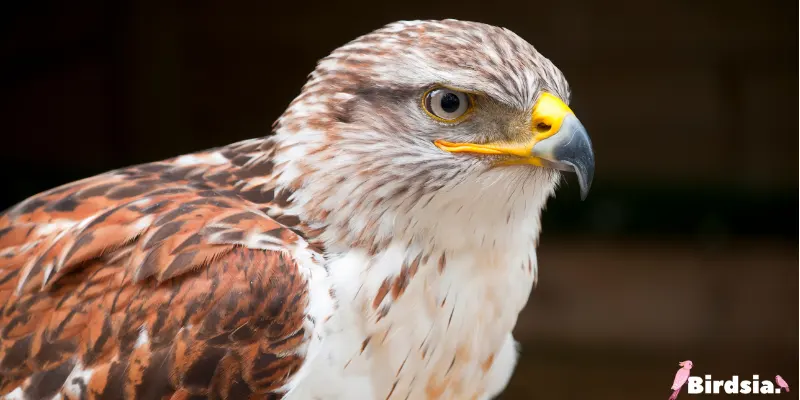
Ferruginous hawks, large birds found across the open landscapes of North America, are named for their rusty-brown plumage reminiscent of iron rust. These impressive raptors, often mistaken for eagles due to their substantial size, can be identified by their broad tails and wings, sizable heads, and feathered legs.
There are two variations: light-colored individuals with rusty-brown upperparts and pale heads, and darker ones with predominantly brown plumage. When alarmed, they emit a distinctive scratchy “kree” sound.
Breeding in grasslands or forest edges, they lay clutches of about four eggs with brown spots. In the winter, they migrate south and may gather in groups.
Scientific Name: Buteo regalis
Lifespan: Up to 20 years
Size: 20-27 inches
Wingspan: 48–60 inches
Native to: North America
Diet: Their diet primarily consists of rabbits, hares, and other small animals, which they hunt from perches or on the ground.
Interesting Facts:
- Ferruginous hawks have higher populations and abundance in their natural habitats because they do not migrate like other hawks.
- Due to their size, proportions, and behavior, they are often mistaken for bald eagles.
- Their nests consist of a platform made from sticks lined with leaves, straw, or grass.
- These nests are typically built in trees or on cliff ledges that are 20 to 40 feet high.
8. Gray Goshawk:
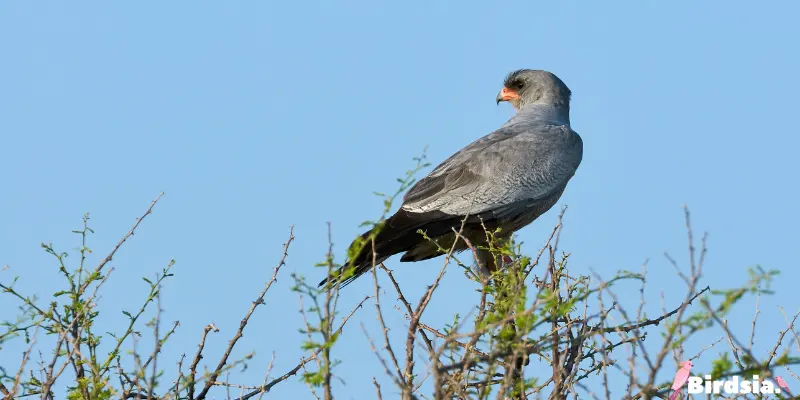
Gray goshawks, medium-sized raptors native to Australia, display two distinct morphs: the all-white morph, known as the white goshawk, and the gray-and-white morph. The white morph showcases entirely white plumage, including the head, wings, upperparts, and underparts, making it rare among raptors. Conversely, the gray morph presents a pale gray head and back, white underparts, and dark wingtips.
They inhabit forests and tall woodlands along the coast of Australia and Tasmania and have a carnivorous diet comprising birds, rabbits, bats, possums, small reptiles, and insects. These hawks exhibit monogamous behavior, nesting in tall trees from July to December and laying 2-3 eggs per clutch.
Scientific Name: Accipiter novaehollandiae
Lifespan: Up to 12 years in captivity
Size: 16-22 inches
Wingspan: 28-43 inches
Native to: Australia and nearby islands
Diet: They mainly prey on rodents such as mice and rats, along with medium-sized birds like quail and small ducks. They may also hunt larger prey, like rabbits, when food is scarce.
Interesting Facts:
- Gray goshawks are distributed across mainland Australia and Tasmania but are elusive due to their shy nature.
- They have a lifespan of 10 to 15 years, although young individuals often fall victim to predation by foxes and feral cats, with many not surviving beyond their third year.
- Unlike most raptors, gray goshawks hunt at dawn or dusk when prey animals’ eyesight is weaker.
- Their hunting strategy involves perching quietly on trees and silently swooping down on prey when it comes within range.
9. Long-legged Buzzard:
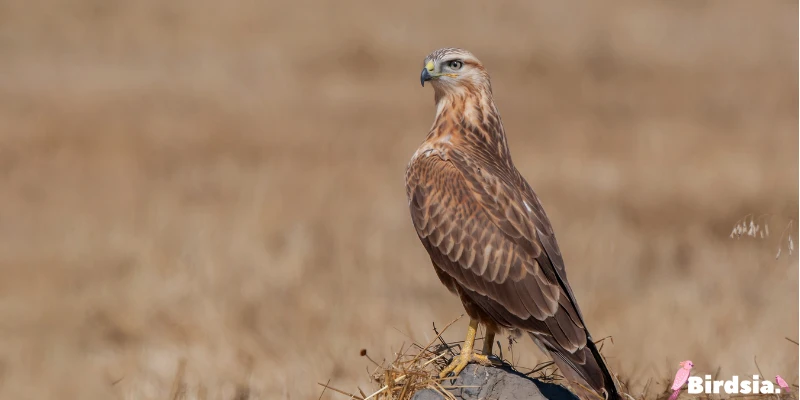
Long-legged buzzards, scientifically referred to as Buteo rufinus, are large raptors found in Europe, Asia, and Africa. They inhabit open areas such as deserts, meadows, steppes, coastal cliffs, and croplands.
These birds exhibit three distinct color morphs and are recognized by their short “mew” calls. Solitary or in pairs, they are diurnal predators, hunting rodents, reptiles, birds, insects, and carrion. Their nests, built on rocks, cliffs, or trees, contain clutches of 1–6 whitish eggs with brown marks.
Scientific Name: Buteo rufinus
Lifespan: Up to 20 years
Size: 20-26 inches
Wingspan: 44-64.2 inches
Native to Europe, Asia and North America
Diet: They prey on rodents, reptiles, birds, insects, and carrion.
Interesting Facts:
- Long-legged Buzzards are known for their graceful soaring flight, utilizing thermals to cover long distances with minimal effort.
- While not globally threatened, certain populations may face challenges from habitat loss, persecution, and pesticide poisoning.
- Conservation efforts focused on preserving their habitats and raising awareness about their ecological importance are crucial for their long-term survival.
10. Black-faced Hawk:
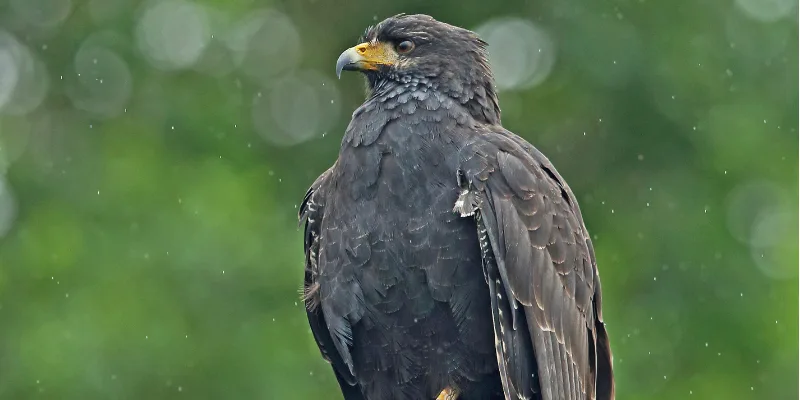
The Black-faced Hawk, scientifically known as Leucopternis melanops, is a conspicuous medium-sized raptor with striking black and white plumage. These hawks boast large white heads adorned with the characteristic black masks from which they derive their name.
Their backs feature a prominent black coloration with a single white band near the tail. Notable features include the orange cere at the base of the beak and black-tipped feathers.
Scientific Name: Leucopternis melanops
Lifespan: Approximately 15 years
Size: 21 inches
Native Range: Lowland Peru north of the Amazon; northeastern Ecuador to Venezuela; southern Colombia; Brazil north of the Amazon; and the Guyanas.
Diet: Their diet consists of a variety of prey, including fish, frogs, large insects, and small mammals such as rabbits, rats, mice, squirrels, and voles.
Interesting Facts:
- Black-faced hawks utilize their long tails for balance while perching on high branches and possess strong talons capable of gripping prey as heavy as 24 pounds.
- Although not inherently aggressive, black-faced hawks can exhibit territorial behavior during the breeding season, particularly when defending their nests.
- When feeling threatened or encroached upon, they may attempt to intimidate intruders by swooping towards them or emitting screams.
- In a departure from typical raptor behavior, males of this species take on the responsibility of caring for nestlings and may engage in mating with multiple females during the nesting season.
11. Black and White Hawk-eagle:
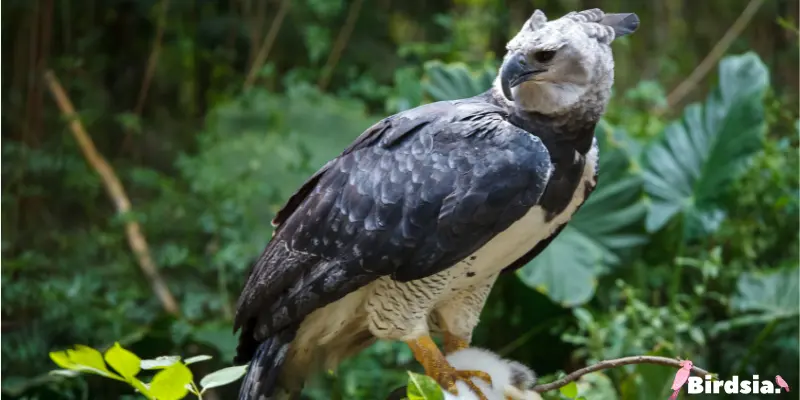
The black and white hawk-eagle has striking features, including yellow eyes, black and white plumage, yellow feet, and a yellow beak with a black tip.
During the mating season, the black and white hawk-eagle constructs nests, typically containing two creamy white eggs. These magnificent birds are commonly found in woodlands in mid-elevation areas across Brazil, Argentina, and Southern Mexico.
Scientific Name: Spizaetus melanoleucus
Lifespan: Up to 42 years
Size: 20–24 inches
Native Range: Southern Mexico to eastern Peru, through Brazil, and northern Argentina.
Diet: They primarily prey on smaller birds, with wood quails and toucans being among their preferred targets.
Interesting Facts:
- This raptor is renowned for its exceptional hunting skills, primarily targeting smaller birds such as wood quails and toucans.
- During the mating season, black and white hawk-eagles construct nests, typically containing two creamy white eggs, contributing to their reproductive success.
- Their preferred habitat spans from southern Mexico to eastern Peru, through Brazil, and northern Argentina, where they thrive in woodlands in mid-elevation areas.
Final Thought:
In conclusion, the world of hawks with white heads is as diverse as it is captivating. From the majestic Hawaiian Hawk soaring over lush rainforests to the elusive Black and White Hawk-eagle hunting in the woodlands of South America, each species offers unique characteristics and behaviors that contribute to its ecological significance and beauty.
Through this exploration of eleven stunning hawks, we’ve gained insights into their habitats, diets, mating habits, and conservation status, shedding light on the importance of preserving these magnificent birds and their habitats. These hawks with white heads, whether hunting or caring for their young, showcase nature’s diversity and resilience, urging us to cherish and safeguard our avian allies for future generations.
What kind of bird has a white head?
Adult Bald Eagles have a striking appearance, featuring white heads and tails contrasted against dark brown bodies and wings.
Can a hawk be an albino?
Bald Eagles are typically unmistakable with their white overall plumage, black wingtips, and a black tail band. However, rare albino forms of other hawks can sometimes resemble them. Immature eagles and adults in certain populations in southern Central America may have more black on their wings.
Is a vulture an eagle?
Eagles and vultures, although both belonging to the bird of prey category and sharing the same taxonomic order, possess distinct characteristics that differentiate them.
Are black eagles rare?
During the breeding season, black eagles perform aerial displays with steep dives and chases. While rare, they face threats from deforestation, causing a population decline, but are not globally threatened.
Please Write Your Comments